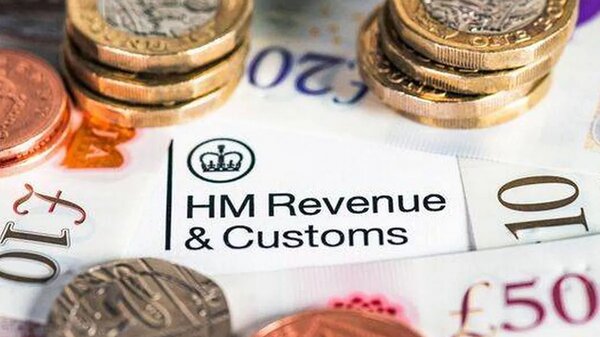Let’s Get Started
Understanding taxable benefits is essential for both employees and employers. Whether you're reviewing your pay package or managing payroll, knowing how non-cash perks are taxed can help you plan ahead and avoid surprises. In this guide, we’ll break down what counts as a taxable benefit, how they're valued, what’s exempt, and your responsibilities under HMRC rules for the 2024/2025 tax year.
What exactly are taxable benefits?
When your employer gives you something of value besides your regular salary, it’s often considered a benefit in kind (BiK). These non-cash perks, also known as fringe benefits, are provided by employers in addition to salary.
These benefits are assigned a monetary value, or are valued, for tax purposes. HMRC sees these benefits as another form of payment. If you received the cash value instead and bought the item yourself, you’d pay tax on that money.
Employee benefits can include both taxable and tax-free perks, so understanding benefits is crucial for tax planning. The value of these benefits is added to your taxable income for tax purposes.
For most employees, taxable benefits appear on a form called a P11D, which your employer must report to HMRC each year. The benefits are reported on this form to ensure compliance with tax regulations.
Common benefits that attract tax
The company car is probably the most well-known taxable benefit. The tax you pay depends on its value, CO2 emissions, the fuel type (such as petrol or diesel), and whether your employer provides fuel for personal journeys. The taxable value can also depend on whether the car is used for business purposes, business use, or personal use.
Private medical insurance, often referred to as health insurance, is another common taxable perk. If your employer pays for your health coverage, you’ll generally pay tax on the cost of the premiums.
Low-interest or interest-free loans over £10,000 are taxable if the interest you pay is less than HMRC’s official rate. The official rate of interest for the 2024/25 tax year is 2.25%, and it will increase to 3.75% from 6 April 2025.
Living accommodation provided by your employer is typically taxable unless it’s necessary for your job, like a caretaker’s flat. Even that shiny laptop or a company-provided mobile phone can be taxable if you use it significantly for personal reasons.
Certain benefits are taxable, while others are exempt benefits, so it’s important to know which is which for tax and reporting purposes. Receiving taxable benefits can reduce your take home pay, as their value is added to your salary and increases your tax liability.

How HMRC calculates the value
Different benefits have different valuation methods. For company cars, it’s a percentage of the car’s list price based on CO2 emissions. For accommodation, it’s usually the higher of the rental value or the annual value.
For most other benefits, HMRC assigns a monetary value to the benefit, which is how the benefit is valued for tax purposes. This monetary value is based on what it would cost to provide that benefit on the open market, essentially what you would pay if buying it yourself.
The taxable value of a benefit can affect the employee's salary for tax calculations and may influence their tax band or employee's tax band. This, in turn, impacts the calculation of the employee's tax liability on the benefit.
Record-keeping is crucial here. Your employer needs to track when and how benefits are used, particularly for items with mixed business and personal use. Employers must also meet specific reporting requirements and use the correct reporting method and payroll system to ensure compliance with HMRC rules.
Benefits you can enjoy tax-free
Some perks are considered tax free benefits and are classified as exempt benefits under HMRC rules. Understanding which benefits are tax-free or exempt is especially valuable for small businesses, as it helps them manage payroll efficiently and plan their benefits strategy.
Not everything triggers a tax bill! Pension contributions within your annual allowance can provide tax relief and are tax-free, they may not count towards your personal allowance, making them a smart way to save for the future.
Workplace childcare, like nurseries or childcare vouchers (if you joined before the scheme closed to new applicants), doesn’t attract tax. A single mobile phone provided primarily for work won’t be taxed, even with some personal calls.
Meals in a staff canteen are tax-free as long as they’re available to all employees. Work-related training to improve skills for your current job usually escapes the taxman’s attention too.
Annual staff functions (like Christmas parties) are exempt from tax if the total cost is £150 or less per person, including VAT. If this threshold is exceeded, the whole benefit becomes taxable.
Who's responsible for reporting and paying?
Employers have specific reporting requirements and must ensure all benefits are reported to HMRC. Your employer has the main responsibility to report benefits accurately on your P11D form by 6 July after the tax year ends, and they also pay Class 1A National Insurance on most benefits. Failing to report benefits correctly can result in penalties and may cause you to owe more tax at the end of the year.
Many employers now “payroll” benefits, which means the tax is paid and collected through PAYE each month rather than via a P11D. This can help spread the cost rather than facing a tax code adjustment or having to pay a lump sum or one lump sum if underpaid tax is collected by HMRC. From 6 April 2027, HMRC plans to make payrolling of most benefits mandatory, removing the use of P11Ds for most employees. Benefits such as employer-provided loans and living accommodation will remain optional for payrolling.
If you receive benefits, check your tax code carefully. HMRC often adjusts it to collect tax on benefits throughout the year, ensuring that employees pay tax or pays tax on benefits in kind (BIKs). Taxable benefits must also be included in your tax return, and bik tax may be due depending on your circumstances.
Missing deadlines or incorrect reporting can lead to penalties, so it’s in everyone’s interest to get this right. Double-checking your P11D against what you’ve actually received is always wise. From 2023/24 onwards, HMRC no longer accepts paper P11D or P11D(b) forms, all submissions must be made online using HMRC’s PAYE Online or compatible payroll software.

Salary sacrifice: trading pay for perks
A salary sacrifice arrangement is a formal agreement where you give up part of your salary in exchange for non-cash benefits. Some salary sacrifice arrangements can provide tax relief for both employees and employers, helping to reduce overall tax liabilities. This can sometimes save both income tax and National Insurance.
Since 2017, the tax advantages of salary sacrifice arrangements have been limited for many benefits. However, pension contributions, cycle-to-work schemes, and ultra-low emission vehicles still offer good tax savings and potential tax relief.
Before agreeing to a salary sacrifice arrangement, consider how it might affect other things. Mortgage applications or maternity pay, which are based on your salary, could be impacted.
Final Thoughts
Getting to grips with taxable benefits isn't the most exciting task, but understanding the basics can save you money. It can also prevent unwelcome surprises when your tax bill arrives.
Remember that tax rules change frequently, so what was tax-free last year might not be this year. If your benefits package changes, it's worth checking the tax implications.
If you're an employer, good communication about the tax impact of benefits helps employees appreciate their true value. Nobody likes unexpected tax bills!
Pie Tax
Keeping track of your taxable benefits shouldn't require an accounting degree. Pie Tax makes it straightforward with real-time tax calculations that factor in your benefits.
Our industry-specific tax assistants understand common benefits in your sector. We explain exactly how they affect your overall tax position, eliminating guesswork and nasty surprises.
The Pie tax multiple-income dashboard clearly shows how benefits from different employers combine. This is perfect for those juggling several roles with various perks and allowances.
Want to see how the Pie tax app can simplify your tax life? Explore the Pie tax app today to learn more.











